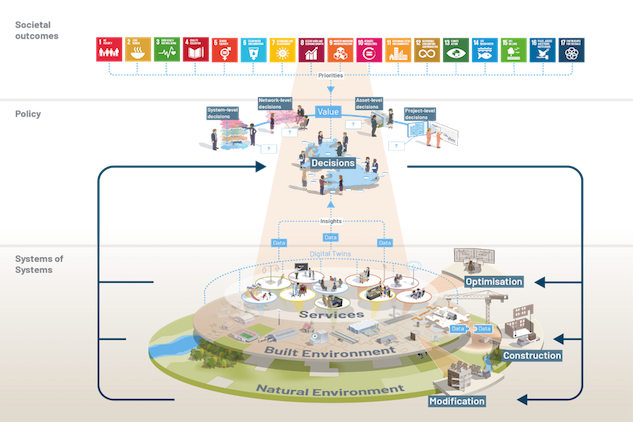
The Infrastructure & Projects Authority (IPA) has launched an updated information management mandate as part of its new Transforming Infrastructure Performance: Roadmap to 2030.
This mandate is applicable immediately (via the UK BIM Framework) and for the duration of the 10-year plan and sets out a range of requirements for clients, including the definition of information concerning assets and projects. Public sector clients should comply with the mandate as part of their implementation of the Construction Playbook.
The mandate requires the client to:
- ensure all procurement and contractual processes are compliant with the standards set out in the UK BIM Framework at the time of delivery;
- follow the sensitivity assessment process set out in Clause 4 of ISO 19650-5 to determine whether to implement a security-minded approach. Where a security-minded approach is required, to develop and implement this following the requirements set out in ISO 19650-5 clauses 5 to 9; and
- have in place the capability to deliver and then fulfil its information management function, as set out in ISO 19650-1, either with people within its own organisation, people acting on its behalf, or a combination of both.
Furthermore, the mandate requires the client to define its information requirements concerning its assets and projects set out in ISO 19650 Parts 2 and 3 and to support its organisational/asset whole-life and project objectives, by producing:
- organisational information requirements – organisational objectives;
- project information requirements – purpose, design and construction of an asset;
- asset information requirements – operation and maintenance of an asset;
- security information requirements, where applicable – in relation to information security; and
- exchange information requirements – in relation to an appointment.
Finally the mandate also requires the client to:
- have a digital mechanism for defining its information requirements and then procuring, receiving, assuring, and immutably storing, via a system of record, the information that it procures;
- fully and properly specify its information requirements, and their satisfactory delivery, within contractual documentation, recognising that the information it procures and holds is an important asset with value, that is critical to undertaking and optimising the operations, maintenance and disposal of the asset; and
- apply the same level of governance and rigour to the maintenance of its information, to ensure that it provides ongoing value and benefits to the client organisation. This will include the ability to share and exploit information, and also make information available for regulatory purposes.
Overall, the Roadmap reinforces the importance of the Construction Playbook, the role of technological innovation and the deployment of modern methods of construction and Platform Design for Manufacture and Assembly.
As part of the Roadmap, the IPA has developed a Built Environment Model that, according to its chief executive Nick Smallwood, “draws a direct line between the outcomes we need as a society – characterised by the UN Sustainable Development Goals – and the decisions we make to build, maintain and renew our infrastructure. The model shows how decisions on infrastructure must find balanced solutions for the natural environment, the built environment and the provision of services. The new Project Outcome Profile will be a key tool in supporting project sponsors to identify priority outcomes across these areas.”

The IPA will lead the implementation of the Roadmap as a cross-government change programme, in partnership with departments, industry and academia, iterating the approach as it goes and championing adaptive policy making and delivery across government.
Alongside the Roadmap, the government has announced details of its £650bn infrastructure investment plans over the next 10 years.












